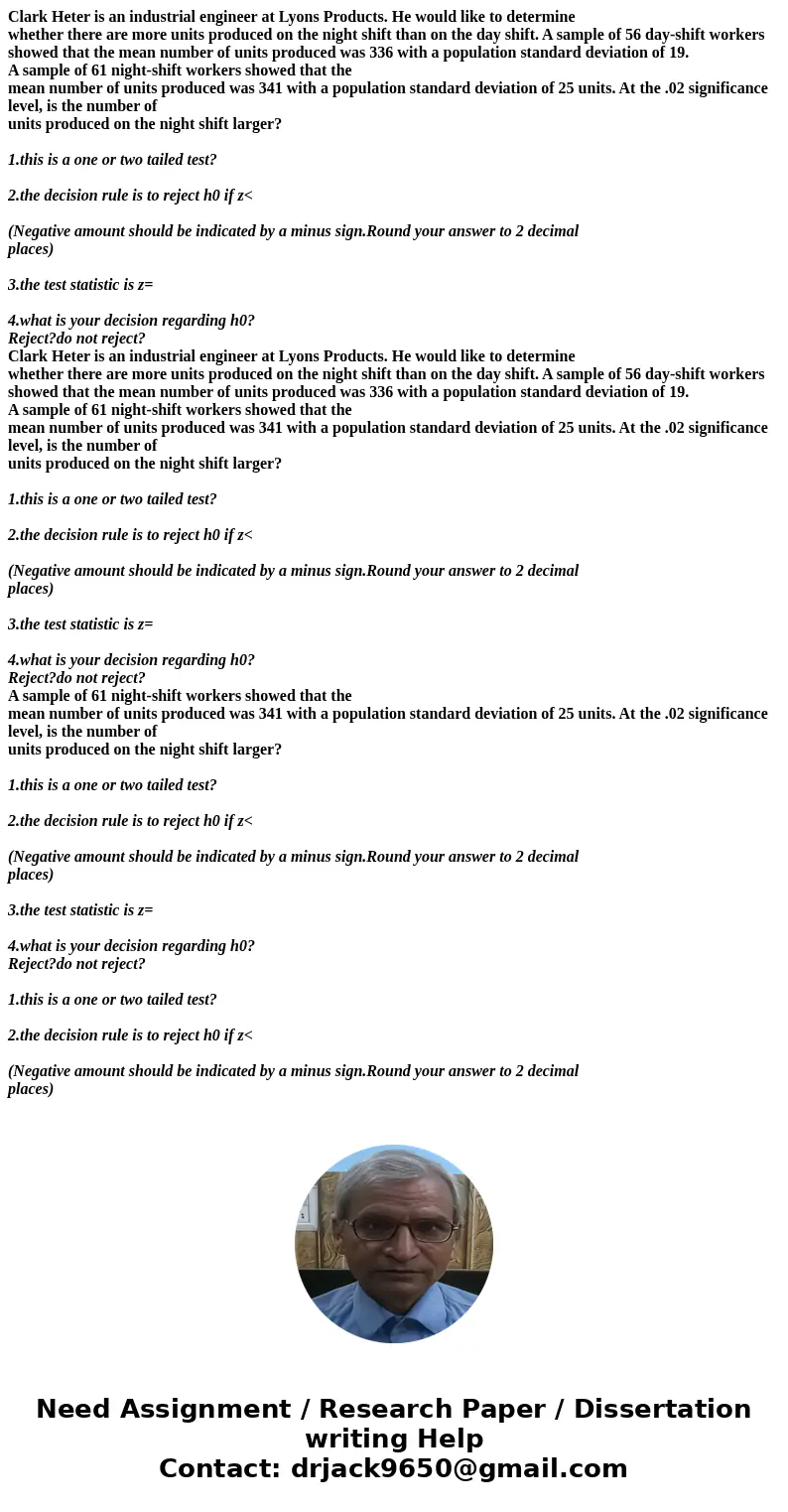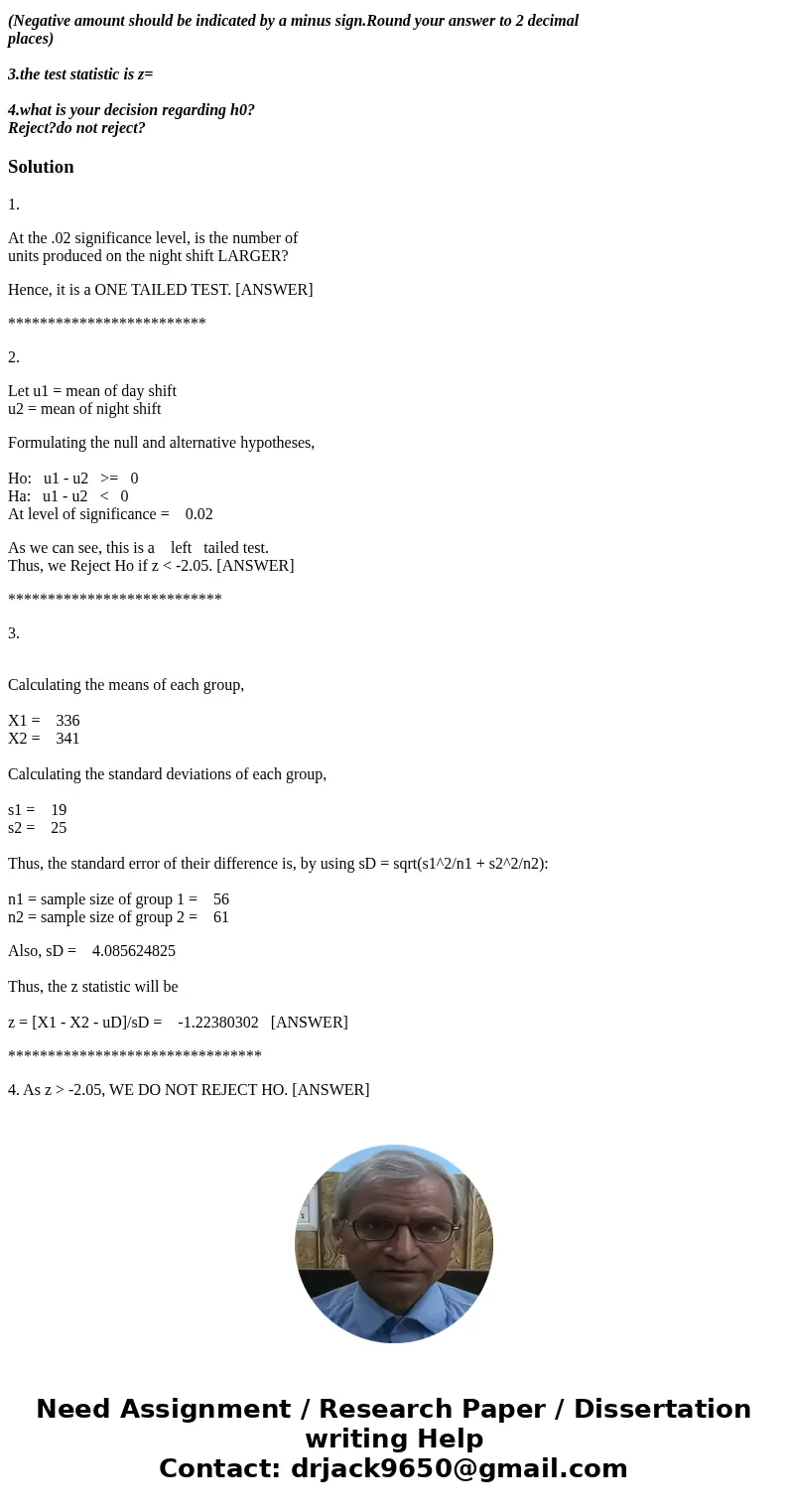Clark Heter is an industrial engineer at Lyons Products He w
whether there are more units produced on the night shift than on the day shift. A sample of 56 day-shift workers showed that the mean number of units produced was 336 with a population standard deviation of 19.
mean number of units produced was 341 with a population standard deviation of 25 units. At the .02 significance level, is the number of
units produced on the night shift larger?
whether there are more units produced on the night shift than on the day shift. A sample of 56 day-shift workers showed that the mean number of units produced was 336 with a population standard deviation of 19.
mean number of units produced was 341 with a population standard deviation of 25 units. At the .02 significance level, is the number of
units produced on the night shift larger?
mean number of units produced was 341 with a population standard deviation of 25 units. At the .02 significance level, is the number of
units produced on the night shift larger?
Solution
1.
At the .02 significance level, is the number of
units produced on the night shift LARGER?
Hence, it is a ONE TAILED TEST. [ANSWER]
*************************
2.
Let u1 = mean of day shift
u2 = mean of night shift
Formulating the null and alternative hypotheses,
Ho: u1 - u2 >= 0
Ha: u1 - u2 < 0
At level of significance = 0.02
As we can see, this is a left tailed test.
Thus, we Reject Ho if z < -2.05. [ANSWER]
***************************
3.
Calculating the means of each group,
X1 = 336
X2 = 341
Calculating the standard deviations of each group,
s1 = 19
s2 = 25
Thus, the standard error of their difference is, by using sD = sqrt(s1^2/n1 + s2^2/n2):
n1 = sample size of group 1 = 56
n2 = sample size of group 2 = 61
Also, sD = 4.085624825
Thus, the z statistic will be
z = [X1 - X2 - uD]/sD = -1.22380302 [ANSWER]
********************************
4. As z > -2.05, WE DO NOT REJECT HO. [ANSWER]


 Homework Sourse
Homework Sourse